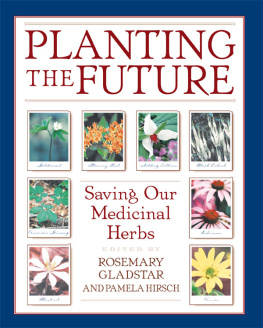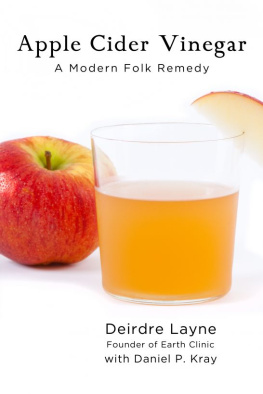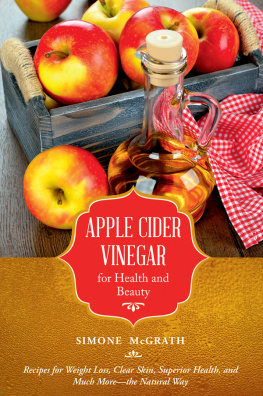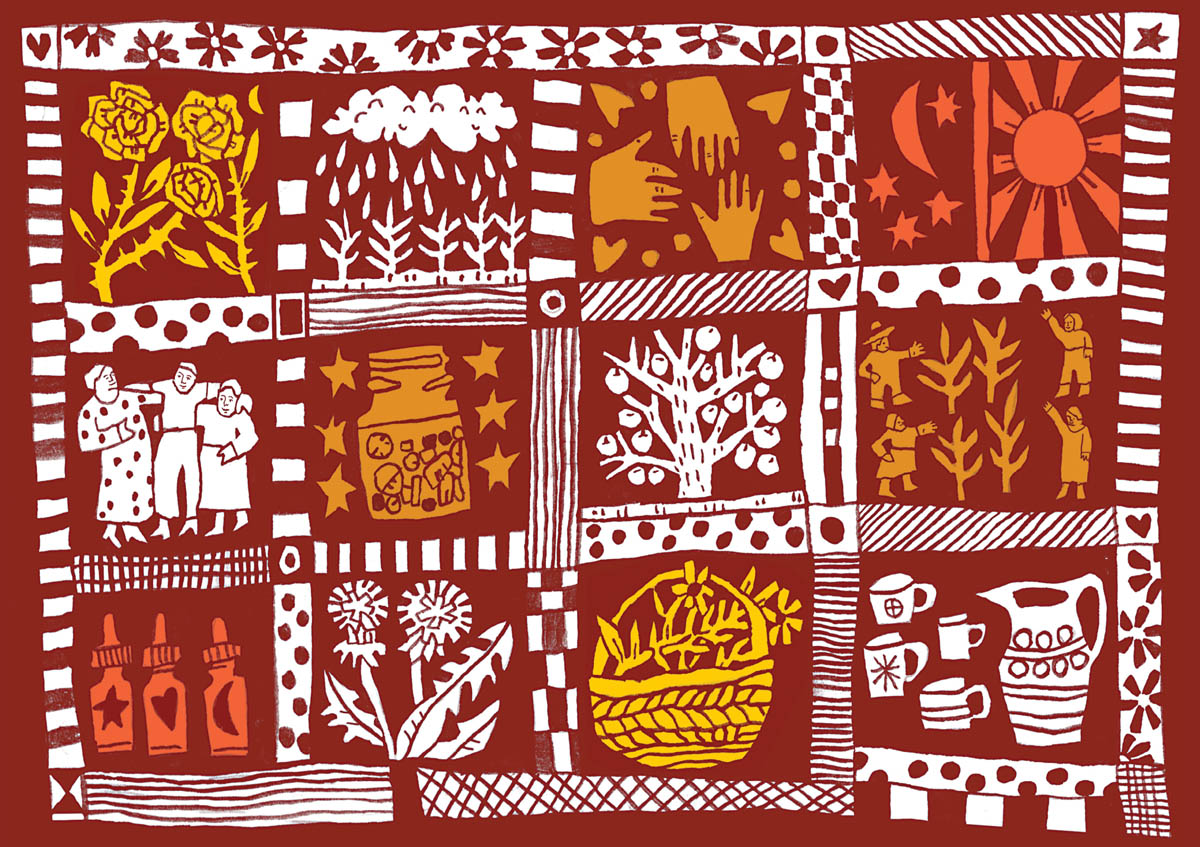>
The mission of Storey Publishing is to serve our customers by publishing practical information that encourages personal independence in harmony with the environment.
Edited by Deborah Balmuth, Nancy Ringer, and Liz Bevilacqua
Art direction and book design by Ash Austin
Text production by Jennifer Jepson Smith
Indexed by Nancy D. Wood
Cover illustration by Gina Triplett/Frank Sturges Reps, front & spine; Ash Austin, back, inside front & back
Interior illustration credits
Chelsea Granger,
Gina Triplett/Frank Sturges Reps,
Ash Austin, backgrounds, borders & decorative elements T/O;
Interior photography from the collection of the author,
Text 2019 by Rosemary Gladstar
Ebook production by Kristy L. MacWilliams
Ebook version 1.1
December 16, 2019
All rights reserved. No part of this book may be reproduced without written permission from the publisher, except by a reviewer who may quote brief passages or reproduce illustrations in a review with appropriate credits; nor may any part of this book be reproduced, stored in a retrieval system, or transmitted in any form or by any means electronic, mechanical, photocopying, recording, or other without written permission from the publisher.
The information in this book is true and complete to the best of our knowledge. All recommendations are made without guarantee on the part of the author or Storey Publishing. The author and publisher disclaim any liability in connection with the use of this information.
Storey books are available at special discounts when purchased in bulk for premiums and sales promotions as well as for fund-raising or educational use. Special editions or book excerpts can also be created to specification. For details, please call 800-827-8673, or send an email to .
Storey Publishing
210 MASS MoCA Way
North Adams, MA 01247
storey.com
Library of Congress Cataloging-in-Publication Data on file
This publication is intended to provide educational information for the reader on the covered subject. It is not intended to take the place of personalized medical counseling, diagnosis, and treatment from a trained health professional.
God is trying to make vinegar.
It is the winemakers job to stay his hand.
August Sebastiani, winemaker
And I say, Let God have her way!
Rosemary Gladstar, herbalist
This book is dedicated...
To three feisty herbal activists who cofounded Tradition, Not Trademark and the Free Fire Cider movement to help ensure that traditional herbal products, especially those with a long history of use, remain community owned and trademark-free. These herbalists took a stand to protect the legacy of our herbal traditions. Kathi Langelier of Herbal Revolution (Maine), Mary Blue of Farmacy Herbs (Rhode Island), and Nicole Telkes of Wildflower School of Botanical Medicine (Texas), we salute you.
To three steadfast lawyers who stood up next to these women in defense of them and our community. James Goggin, Seth Coburn, and Rita Heimes, we applaud you.
In loving memory, to one of the great herbalists of our time, Cascade Anderson Geller (19542013), who would be proud to know that we took a stand.
Introduction
Cider Vinegar and the Fire Cider Revolution
With its tart, sour, and slightly sweet zing, apple cider vinegar adds a zesty flavor to many dishes, along with a hardy dose of healthful benefits. In fact, cider vinegar may be among the most ubiquitous health items found in the world. Inexpensive, easily made, easy to store, long lasting, versatile, and tasty, its the poor mans liquid gold. Travel the four corners, the nooks and crannies, the circles and spirals of the world wherever apples grow, you will find all manner of cider vinegar recipes and remedies still in popular use today. Apple cider vinegar has been used for issues ranging from gastrointestinal problems to heartburn, and for mental clarity, energy, immune health, and a variety of first-aid measures and used successfully enough, it seems, to have its uses passed down through time.
Some apple cider vinegar recipes have been around for centuries. have been popular recipes for more than five hundred years, and even today they are made and sold around the world. Some formulations, like Dr. Jarviss famous apple cider vinegar and honey tonic and Dr. John Christophers apple cider vinegar and cayenne tincture, became popular in the alternative healing community of the 1960s, when drinking cider vinegar with as much cayenne as you could tolerate, with or without honey, was deemed the healthy thing to do. It certainly could put fire in your belly (and hair on your chest!).
And then there was fire cider... Who would ever have thought that a simple vinegar recipe made with common kitchen ingredients would become as popular as it has or as controversial? It certainly never crossed my mind that day, oh so long ago, when my students and I were in the kitchen chopping garlic, onions, horseradish, and ginger, and we ended up adding it all to a jar of apple cider vinegar. I could never have predicted that one day we would be headed to federal court to protect the tradition of this simple remedy, and that fire cider would make national headlines.
It all began quite innocently...
About four decades ago, in the kitchen of the California School of Herbal Studies, we were creating an herbal formula for winter health, but it was more of a creative group effort than an actual recipe. It was the onset of autumn and I was teaching a class for my students called Herbs for Winter Health. Winters in Northern California are gray, chilly, and damp, and many people in Sonoma County, where the herb school was located, were prone to repetitive colds, chronic coughs, respiratory issues, and seasonal depression, all symptoms brought on by the cold dampness of the region. The task was to create a remedy using common, readily available kitchen ingredients that could be taken as a daily tonic to warm and energize the body, raise immunity, and aid in circulation.
There were a few such tonics already available: Dr. Jarviss apple cider vinegar tonic; Dr. Christophers hot apple cider vinegar and cayenne toddy; the popular Four Thieves Vinegar (which allegedly was used by four grave robbers in the Middle Ages to prevent them from getting the plague while they robbed the graves of victims); and a newly introduced remedy called Cyclone Cider that had us all reeling. Researching what were the common features in each of these formulas, I had gathered and purchased a basket of kitchen herbs and had a large bottle of raw apple cider vinegar and local raw honey on hand. We were ready to roll!
Next page




















